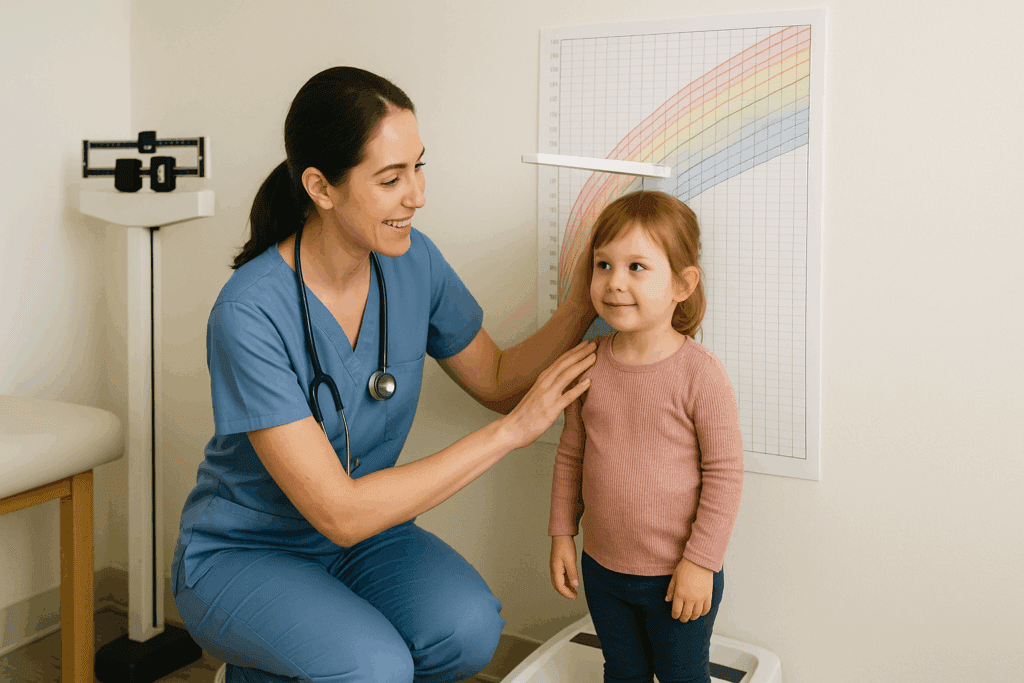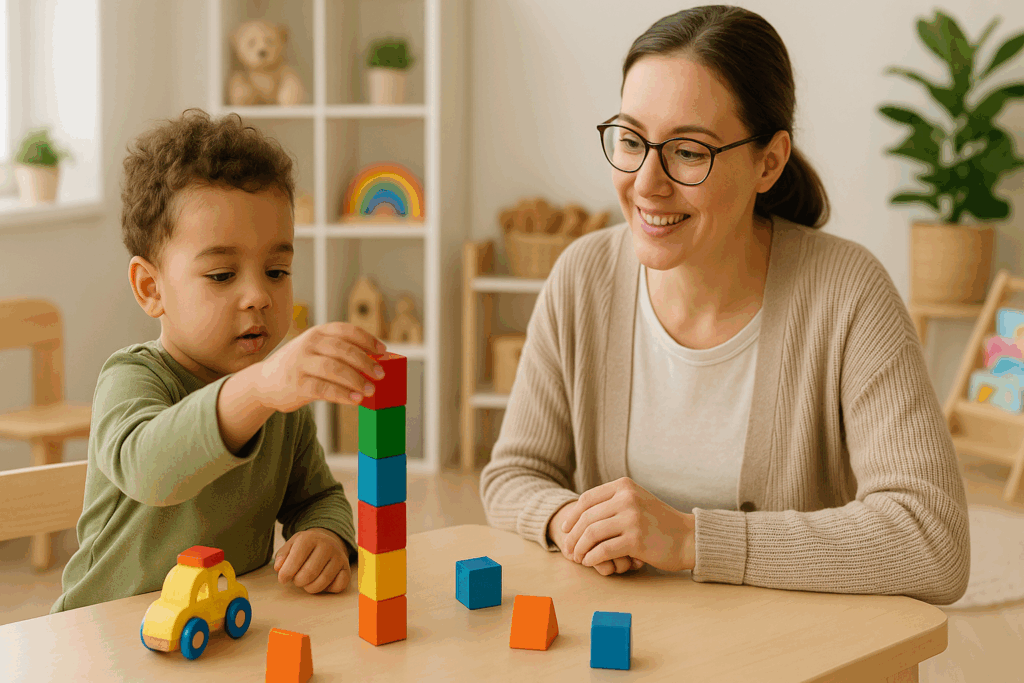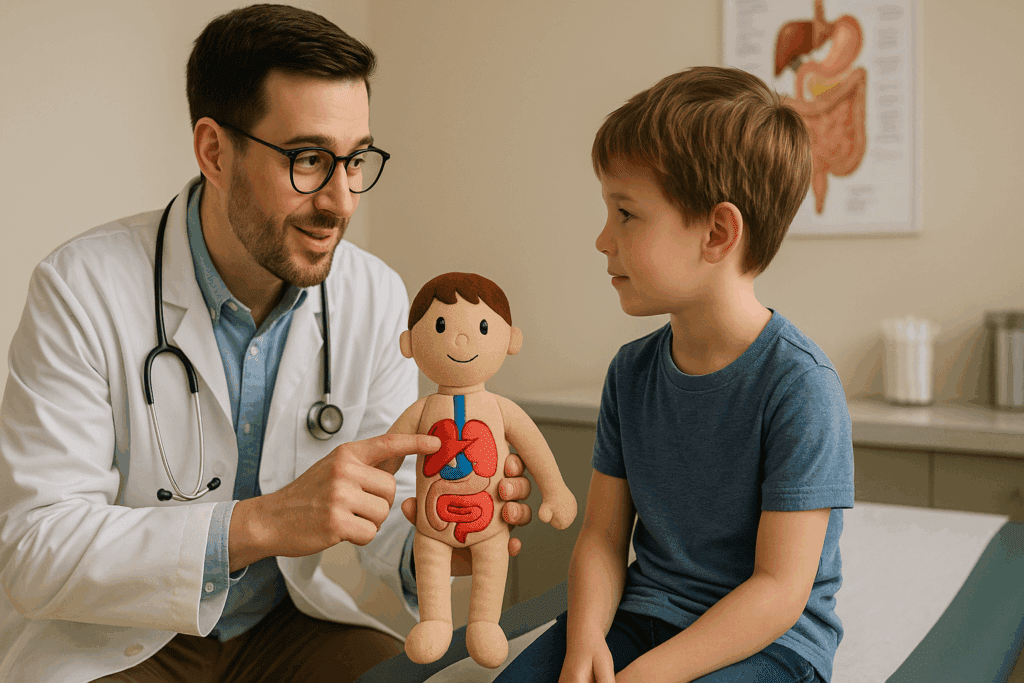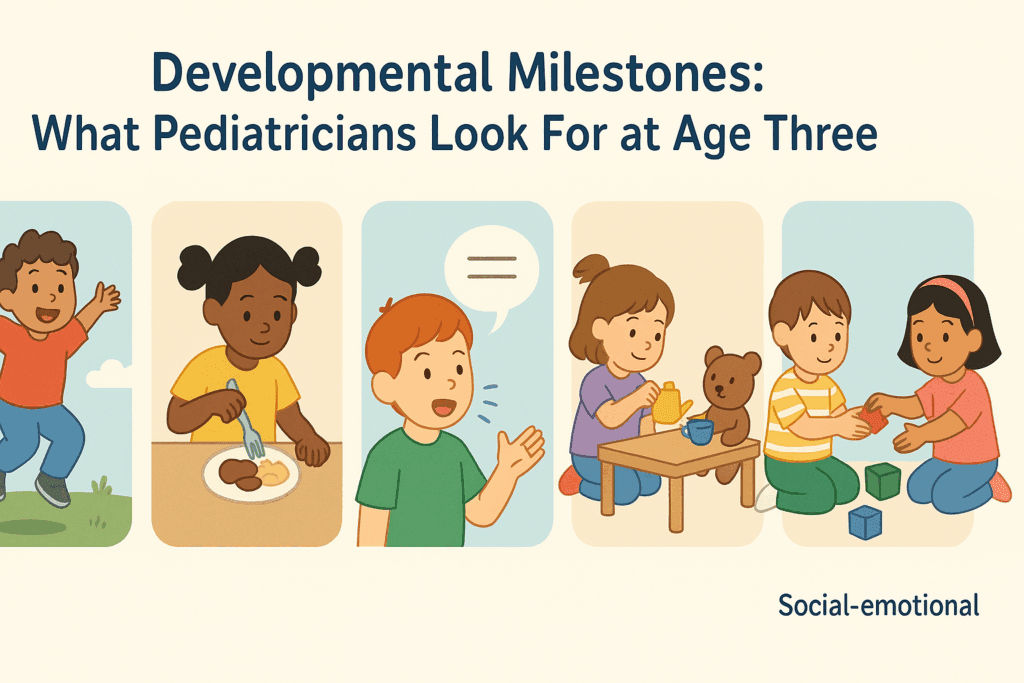The journey of early childhood development is both remarkable and complex, and by the age of three, children are reaching critical milestones that provide insight into their physical, emotional, cognitive, and social health. The 3 year old well child check serves as a vital checkpoint for assessing a child’s overall development and detecting any early signs of delay or concern. This routine pediatric appointment is not merely about measuring height and weight; it is a comprehensive evaluation that empowers parents to understand their child’s health trajectory and take proactive steps toward long-term wellness.
You may also like: The Essential Guide to the Different Types of Screening Tests for Early Detection and Lasting Wellness

Understanding the Purpose and Importance of the 3 Year Old Well Child Check
At its core, the 3 year old well child check is designed to ensure that a child is developing appropriately for their age in every domain of health. Pediatricians utilize this appointment to evaluate physical growth parameters, screen for developmental and behavioral concerns, update immunizations, and provide anticipatory guidance tailored to the unique needs of three-year-olds. The third year of life marks an important transition as children move from toddlerhood to preschool age, and their increasing independence, language capabilities, and social interactions present new opportunities and challenges.
Importantly, this well child check also represents a time for parents to ask questions, voice concerns, and gather essential information about nutrition, sleep, safety, and emotional development. It offers a collaborative space for caregivers and healthcare professionals to align on best practices for supporting the child’s growth. Pediatricians also use this check-up to screen for early signs of conditions such as autism spectrum disorder, hearing or vision impairment, and other developmental delays. As such, the 3 year old well child check serves as both a preventative and diagnostic tool that contributes to early detection and timely intervention.

Physical Growth and Nutrition: Tracking the Building Blocks of Health
One of the first components of the 3 year well check involves measuring the child’s height, weight, and head circumference to ensure that growth is on track. These metrics are plotted on standardized growth charts to identify patterns and deviations that may indicate underlying health issues. A healthy three-year-old typically gains about four pounds per year and grows around two to three inches annually. Deviations from expected growth trajectories may warrant further investigation into nutritional habits, metabolic conditions, or chronic health concerns.
Nutrition plays a crucial role in supporting physical growth and development. During the 3 year old well child check, pediatricians often assess dietary intake, including fruit and vegetable consumption, calcium and iron levels, and overall caloric adequacy. Many children at this age begin to exhibit picky eating behaviors, which can challenge parents and caregivers. Physicians may provide evidence-based strategies for encouraging balanced meals, managing mealtime behavior, and addressing potential deficiencies. Nutritional counseling at this stage is particularly impactful because habits established during early childhood can influence health outcomes throughout life.

Developmental Milestones: What Pediatricians Look For at Age Three
A critical part of the 3 year old well child check involves assessing developmental milestones across key domains: gross motor, fine motor, language, cognitive, and social-emotional skills. Gross motor skills may include activities such as running, climbing, and jumping, while fine motor skills are demonstrated through tasks like stacking blocks, drawing circles, or using utensils. Pediatricians observe and inquire about these behaviors to ensure the child’s motor development is within the expected range.
Language development is another central focus. By age three, most children can use three- to four-word sentences, follow two-step directions, and understand basic questions. Speech should be clear enough to be understood by familiar adults. Pediatricians may use standardized screening tools or conduct direct observation to evaluate speech and language skills. Early language delay can be a marker for broader developmental concerns and may prompt referrals for speech therapy or further assessment.
Cognitive and problem-solving skills are assessed through play-based interactions and caregiver reports. Children are expected to demonstrate curiosity, begin pretend play, and show an understanding of basic concepts like color or size. Social-emotional milestones include expressing a range of emotions, showing affection, taking turns, and beginning to engage in cooperative play. Recognizing delays or atypical patterns in these areas can lead to early interventions that significantly improve long-term outcomes.

Behavioral and Emotional Health: Nurturing Resilience and Regulation
Emotional and behavioral health is integral to overall well-being, and the 3 year old well child check provides a valuable opportunity to assess these aspects of a child’s development. Pediatricians may ask about temper tantrums, sleep habits, fears, attachment behaviors, and interactions with peers and caregivers. While some level of oppositional behavior and mood variability is typical at this age, certain patterns may raise concerns about emotional regulation or mental health challenges.
Children at age three are still developing the ability to manage frustration, delay gratification, and navigate social dynamics. Pediatricians may guide parents on setting appropriate limits, using positive reinforcement, and fostering emotional literacy through books, routines, and conversations. Understanding the emotional landscape of a three-year-old helps parents respond with empathy while maintaining consistency and structure.
Additionally, early screening tools such as the Ages and Stages Questionnaire: Social-Emotional (ASQ:SE) or Pediatric Symptom Checklist (PSC) may be used to identify early indicators of anxiety, depression, or attention difficulties. By creating a safe space for discussion, the 3 year old well child check allows for open dialogue about mental health and behavior, reducing stigma and promoting early support.
Immunizations and Preventive Screenings: Safeguarding Future Health
One of the cornerstones of preventive care during the 3 year old well child check is the administration of immunizations and screening tests. While the exact immunization schedule may vary slightly based on prior vaccination history, most three-year-olds receive updates for vaccines such as DTaP (diphtheria, tetanus, pertussis), IPV (polio), MMR (measles, mumps, rubella), varicella (chickenpox), and the annual influenza vaccine. These vaccines protect against potentially serious illnesses and contribute to herd immunity within the community.
In addition to immunizations, pediatricians perform targeted screenings based on individual risk factors, family history, and current guidelines. Common screenings include vision and hearing assessments, lead exposure testing, and tuberculosis screening. These evaluations are especially crucial for identifying conditions that may not present with obvious symptoms but can significantly impact development and learning if left undetected.
Pediatricians also discuss dental health, recommending regular brushing, fluoride supplementation, and a dental home if one is not already established. Since dental caries remain one of the most common chronic childhood conditions, early oral health education is an essential component of the well child visit. Through these preventative measures, the 3 year old well child check serves as a comprehensive shield against future health complications.

Parental Guidance and Education: Empowering Families Through Information
Beyond screening and examination, one of the most transformative aspects of the 3 year old well child check is the opportunity for education. Pediatricians provide personalized anticipatory guidance based on the child’s developmental stage and family dynamics. Topics may include toilet training, managing sibling rivalry, fostering independence, and promoting early literacy through reading and storytelling.
These conversations help parents understand what to expect in the coming months and how to create supportive home environments that nurture healthy development. Pediatricians may recommend age-appropriate activities that enhance cognitive and motor skills, suggest behavioral strategies for managing defiance or aggression, and advise on setting sleep routines to promote restorative rest.
Importantly, the appointment allows for two-way communication. Parents are encouraged to share observations, ask questions, and express concerns without judgment. Whether discussing the emotional nuances of a boys doctor appt or navigating dietary challenges, the well child visit offers a space where caregivers feel heard and supported. This mutual exchange reinforces trust and fosters an ongoing partnership in care.

Health Disparities and Access: Bridging the Gap in Early Childhood Care
While the benefits of the 3 year well check are well-established, disparities in access and outcomes persist across different populations. Socioeconomic status, insurance coverage, geographic location, language barriers, and systemic inequities can all influence whether children receive timely and comprehensive preventive care. These disparities can lead to missed opportunities for early detection and exacerbate existing health inequities.
To address these challenges, pediatric practices and public health systems are increasingly emphasizing culturally responsive care, community outreach, and integrated health services. Programs such as Head Start, Early Head Start, and Medicaid outreach initiatives aim to connect families with essential services, including well child visits, developmental assessments, and immunizations.
By recognizing the social determinants of health and tailoring interventions accordingly, healthcare providers can ensure that every child, regardless of background, has the opportunity to thrive. Efforts to bridge these gaps underscore the vital role of the 3 year old well child check in promoting health equity from the earliest stages of life.
3 Year Old Well Child Check and the Transition to Preschool
As children approach preschool age, the 3 year old well child check takes on additional importance as a gateway to school readiness. Pediatricians often assess pre-academic skills such as recognizing colors, counting, and name recognition, while also evaluating social competencies that support group learning environments. These assessments help identify any areas where the child may need additional support or enrichment before starting formal education.
The transition to preschool also introduces new exposures to illness, social stressors, and structured routines. Pediatricians can provide guidance on strengthening the immune system through diet and sleep, managing separation anxiety, and fostering adaptability to new environments. For children with chronic conditions or developmental delays, care coordination with educators and therapists becomes especially critical.
Preparing for preschool is not just about academics; it’s about helping children feel confident, safe, and engaged in a learning community. The 3 year old well child check offers a structured opportunity to evaluate readiness and to plan proactively for a smooth and positive transition.

Boys Doctor Appt Considerations: Gender-Specific Insights in Pediatric Care
While developmental milestones are generally consistent across genders, there are subtle differences that may influence the approach to a boys doctor appt. Boys, on average, may exhibit slightly slower language development but more robust gross motor activity. Pediatricians remain aware of these variations and adjust screening and guidance accordingly, without pathologizing normal developmental diversity.
In conversations about behavior, emotional regulation, and socialization, providers may explore the unique ways in which boys express emotion, engage in play, and respond to discipline. Understanding gender-specific patterns helps tailor parenting strategies and reinforces the value of individualized care. Additionally, the well child check offers a platform for discussing anatomical education, privacy, and personal boundaries in age-appropriate ways.
These discussions lay the groundwork for future conversations about body image, consent, and self-care. By acknowledging gender influences while promoting inclusivity and sensitivity, pediatricians ensure that every boys doctor appt contributes to holistic and respectful care.
Fostering Long-Term Wellness Through Early Intervention and Follow-Up
Perhaps the most profound impact of the 3 year old well child check lies in its potential to shape long-term health trajectories through early intervention. When developmental delays, sensory impairments, or behavioral concerns are identified at age three, targeted therapies and support systems can be mobilized during a window of maximal brain plasticity. This early action often results in significantly improved outcomes in education, social relationships, and emotional resilience.
Pediatricians play a central role in coordinating these interventions, referring families to specialists, early intervention programs, or public school services as needed. Follow-up visits, developmental tracking, and interdisciplinary collaboration ensure continuity of care and sustained progress. Families become active participants in this journey, equipped with knowledge and empowered to advocate for their child’s needs.
Moreover, the well child check encourages parents to adopt a preventative mindset, prioritizing health maintenance over crisis response. This perspective fosters healthier lifestyles, better adherence to medical recommendations, and a more collaborative healthcare experience overall.
Frequently Asked Questions: The 3 Year Old Well Child Check and Beyond
How should I prepare my child emotionally for the 3 year old well child check?
Helping a child feel secure and confident before a medical appointment starts with familiarizing them with what to expect in age-appropriate terms. Use simple stories or role-play with toys to introduce the idea of a check-up, highlighting that the doctor is there to help them grow strong and healthy. Consider bringing a comfort item, such as a stuffed animal or blanket, and offer praise for their cooperation. Emotional preparation also includes setting a calm tone yourself—children pick up on parental anxiety, so a relaxed demeanor can make all the difference. Ultimately, viewing the 3 year old well child check as a positive experience will help build long-term trust in healthcare settings.
What developmental red flags might prompt early intervention following a 3 year well check?
Pediatricians are highly trained to detect subtle signs that might indicate developmental delays during a 3 year well check. While some variability in development is normal, certain red flags warrant a closer look. These may include a child not speaking in short phrases, difficulty following simple instructions, lack of pretend play, poor eye contact, or persistent aggressive behavior toward others. If such concerns arise, pediatricians typically recommend further evaluation through early intervention programs or developmental specialists. Acting on these signs early can significantly improve a child’s trajectory in communication, social interaction, and learning.
Why are emotional and behavioral screenings so important during a boys doctor appt?
At age three, emotional regulation and behavior patterns are rapidly evolving, and a boys doctor appt offers a unique opportunity to assess emerging tendencies. Boys may externalize emotions differently than girls, often showing frustration through physical outbursts or withdrawal rather than verbal expression. These patterns, if persistent, may indicate underlying concerns such as sensory processing challenges, early signs of ADHD, or emotional dysregulation. Emotional screenings help identify children who could benefit from support in managing impulses, developing empathy, or improving coping strategies. Addressing these early allows for more effective interventions that foster emotional resilience and social readiness.
How can the 3 year old well child check address environmental health risks?
Beyond physical and developmental health, the 3 year old well child check often includes a review of the child’s living environment to identify potential hazards. Pediatricians may ask about exposure to tobacco smoke, mold, lead-based paint in older homes, or unsafe drinking water. They might also discuss safe sleep environments, car seat use, and access to firearms. These questions help flag preventable environmental risks that could impact respiratory health, neurodevelopment, or injury rates. Recommendations provided at this stage can lead to proactive changes in the home that enhance a child’s long-term health trajectory.
What are the long-term benefits of tracking growth patterns during the 3 year well check?
Monitoring growth at regular intervals allows clinicians to establish a personalized health baseline and identify deviations that may suggest underlying issues. During the 3 year well check, consistent growth patterns indicate proper nutrition, hormonal balance, and general wellness. Conversely, a plateau or sudden drop in weight or height percentile may uncover conditions like malabsorption, endocrine disorders, or psychosocial stress. These findings, when contextualized with family history and lifestyle, guide early interventions that may prevent chronic conditions later in life. By capturing these trends early, pediatric care becomes not just reactive but powerfully preventive.
How can parents use information from the 3 year old well child check to support school readiness?
The insights gained from a 3 year old well child check can be directly translated into strategies that prepare children for structured learning environments. Pediatricians often share recommendations for fine motor skill activities, such as coloring or cutting with safety scissors, to build pre-writing skills. They may also suggest routines to improve attention span, encourage self-care tasks like putting on shoes, and promote early literacy through daily reading. Understanding the child’s temperament and learning style at this age can also help parents select appropriate preschool settings. Armed with this information, families can create enriching environments that nurture both academic and emotional growth.
What role does sleep quality play in outcomes discussed during a boys doctor appt?
Quality sleep is a foundational pillar of physical, emotional, and cognitive health, especially for rapidly growing children. During a boys doctor appt, discussions around sleep may reveal patterns such as resistance at bedtime, night waking, or daytime fatigue. Poor sleep can contribute to behavioral issues, delayed language development, and impaired attention regulation, which are often explored during well child visits. Pediatricians may advise on consistent bedtime routines, sleep hygiene practices, and screen time limitations to improve restfulness. Identifying and correcting sleep disturbances at this age lays the groundwork for better mood regulation, learning ability, and overall well-being.
Are there specific concerns related to boys’ language development that come up during a 3 year well check?
Boys sometimes experience slightly slower language acquisition compared to girls, though this does not necessarily indicate a disorder. During the 3 year well check, providers pay close attention to expressive and receptive language abilities, vocabulary diversity, and clarity of speech. If concerns arise, such as limited word use or difficulty forming coherent sentences, the pediatrician may recommend a hearing evaluation or a referral to a speech-language pathologist. Understanding how boys express themselves, including through gestures or play, is essential for accurate assessment. Encouraging rich verbal interaction at home and limiting passive screen time can also support robust language development.
How do cultural and familial values influence discussions at the 3 year old well child check?
Cultural beliefs and family dynamics play a significant role in shaping expectations around behavior, discipline, diet, and milestones. During the 3 year old well child check, pediatricians strive to understand and respect these values while offering evidence-based guidance. For example, differing attitudes about co-sleeping, toilet training, or emotional expression can influence how parents interpret their child’s behaviors. A culturally sensitive approach allows for more meaningful conversations and tailored recommendations that honor both medical best practices and family traditions. Open dialogue fosters trust and ensures that care plans align with the family’s values and lifestyle.
How does technology impact child behavior discussed during a boys doctor appt?
Technology use among toddlers has surged in recent years, and its effects are increasingly addressed during a boys doctor appt. While educational apps can offer limited benefits, excessive screen time has been linked to delayed speech, disrupted sleep, and attention issues. Boys, who may gravitate toward active or visually stimulating games, are particularly susceptible to overstimulation and decreased imaginative play. Pediatricians often counsel families on the importance of interactive, real-world experiences and recommend setting firm boundaries around device usage. Guidance typically includes strategies for co-viewing content, encouraging outdoor activity, and using technology mindfully as a supplementary tool rather than a primary entertainment source.
Why follow-up after a 3 year old well child check is just as important as the visit itself
A single check-up provides a valuable snapshot, but true pediatric care requires continuity and ongoing engagement. Follow-up appointments, whether for referred evaluations, behavior concerns, or immunization schedules, help ensure that issues flagged during the 3 year old well child check are addressed effectively. These subsequent visits enable providers to track interventions, refine recommendations, and respond to new developments in the child’s health or environment. They also offer parents an evolving support system as their child enters new developmental stages. By treating pediatric care as a continuum rather than a series of isolated events, families can foster resilience and optimize their child’s potential for lifelong wellness.
Conclusion: Why the 3 Year Old Well Child Check Is a Vital Investment in Future Health
In the tapestry of childhood development, the 3 year old well child check stands as a vital thread that connects early growth to future health and wellness. Far more than a routine appointment, it is a comprehensive, preventive, and empowering experience that offers insight into every dimension of a child’s well-being. From tracking physical growth and development to addressing behavioral and emotional needs, this milestone visit equips families with the tools and knowledge to support their child’s thriving.
Through timely screenings, expert guidance, and open dialogue, pediatricians help parents navigate the challenges and opportunities of early childhood with confidence and clarity. They also serve as advocates for health equity, working to ensure that all children have access to the foundational care they need. Whether discussing immunizations, preparing for preschool, or addressing concerns during a boys doctor appt, the well child check reinforces the importance of early detection, prevention, and proactive support.
As families reflect on the profound journey of the first three years, the 3 year old well child check offers reassurance, direction, and hope. It reminds us that health is not merely the absence of illness but the presence of potential—and that every child deserves the opportunity to grow, learn, and flourish in a world that values and supports their unique journey.
Further Reading:
AAP Schedule of Well-Child Care Visits

